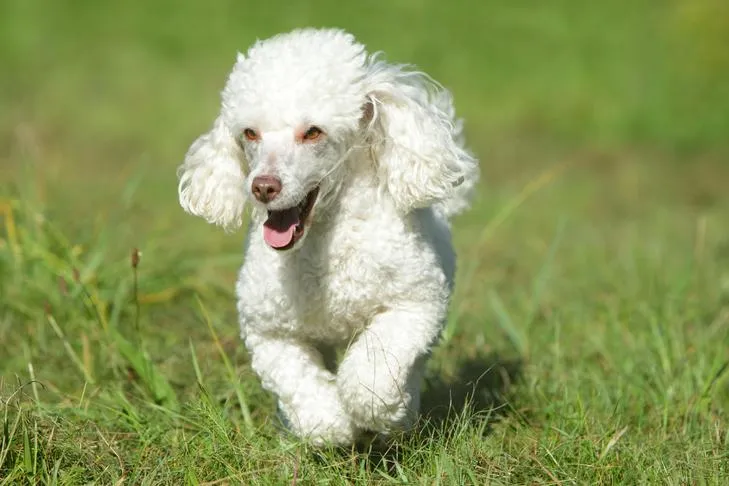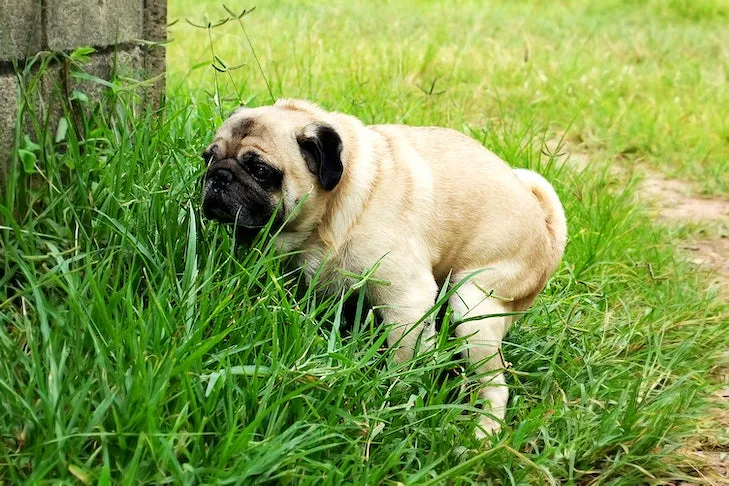Waiting for your dog to relieve themselves can be an exercise in patience, especially in challenging weather. For many dog owners, the question of “how to teach my dog to poop outside” is a common one. Fortunately, with a systematic approach and consistency, you can teach your canine companion to perform their business on command. This not only saves you time but also offers significant advantages in various situations, from travel to veterinary visits.
The ability to cue your dog to potty is a valuable asset for any dog owner. It can expedite potty breaks during bad weather, ensure your dog relieves themselves before entering a building, and is particularly useful for dogs participating in conformation shows or other performance events. Furthermore, having this skill can be crucial if a urine or stool sample is needed at the vet’s office, or for senior dogs who might require an indoor potty solution. Learning how to train a dog to come inside, for instance, complements this skill by managing their entry and exit from the home.
Selecting the Right Potty Cues
Establishing distinct verbal cues for peeing and pooping is key to making the desired behavior clear to your dog. While common cues like “pee” and “poop” are straightforward, you can also opt for more subtle terms such as “showtime” for pooping and “business” for peeing, or any other words that resonate with you. The goal is to create a clear association between the word and the action.
 A small dog, possibly a Toy Poodle, is captured in mid-run across a grassy field.
A small dog, possibly a Toy Poodle, is captured in mid-run across a grassy field.
The Method: Capturing the Behavior
The process of teaching your dog to potty on cue is fundamentally about pairing a verbal command with a behavior they already perform naturally. This “capturing” method leverages your dog’s existing potty habits, making the training process more straightforward. It’s akin to the initial stages of potty training a puppy, requiring patience and a plentiful supply of rewards.
Step 1: Preparation is Key
Anticipate when your dog is most likely to need to go, such as after waking up from a nap or after a period of play. Be ready with high-value treats when you take your dog outside to their designated potty area.
Step 2: Observe and Wait
Once outside, allow your dog to search for their preferred spot without any verbal interference from you. Patience during this phase is crucial.
Step 3: Signal and Praise
As your dog begins to squat or lift their leg to urinate or defecate, prepare to issue your chosen cue, followed by immediate praise.
Step 4: Timing the Cue
The ideal moment to introduce your verbal cue is as your dog is actively engaged in the act of peeing or pooping, or just as they are finishing. This timing helps prevent them from stopping prematurely upon hearing the cue. If you use a clicker, a click at this precise moment, followed by the cue and a treat, can be highly effective.
Step 5: Reinforce the Association
With consistent practice over several days or weeks, your dog will begin to associate the verbal cue with the act of pottying. You can then start to use the cue slightly earlier, just as they are about to squat or circle. A strong “yes” and a treat upon completion reinforces the correct behavior.
Step 6: Testing the Cue
Once your dog shows a clear understanding of the cue, it’s time to test it. Take your dog to a quiet spot and use your chosen cue. If they successfully relieve themselves, provide enthusiastic praise and rewards. This step is vital for generalizing the skill to new situations, much like how teaching your dog to stop pulling on the leash requires consistent practice in various environments.
 A Pug is pictured squatting outdoors in a patch of tall green grass, in the process of defecating.
A Pug is pictured squatting outdoors in a patch of tall green grass, in the process of defecating.
The Importance of Consistency
Consistency is paramount in any dog training endeavor, and teaching potty cues is no exception. Each time your dog successfully potties after hearing your cue, it must be paired with a reward. Keeping treats readily accessible near the door can simplify this process, ensuring you’re always prepared. When your dog truly understands the cue, they will often attempt to go potty as soon as they hear it, even if they don’t fully need to. Enthusiastically reward these efforts, as they indicate comprehension.
Keeping Training Enjoyable and Effective
While avoiding prolonged waits in inclement weather is a primary motivation, it’s important to remember that your dog likely enjoys their outdoor time for the enrichment it provides. To prevent your dog from associating the potty cue with an abrupt end to outdoor fun, ensure that after they relieve themselves, they are still rewarded with opportunities for sniffing, continuing the walk, or playing fetch. This keeps the experience positive and reinforces the cue without creating a negative association. Learning to stop your dog from jumping on visitors, for example, also benefits from positive reinforcement and avoiding abrupt endings to enjoyable interactions.
Expanding the Training Environment
To ensure your dog reliably responds to the potty cue in various settings, it’s crucial to practice in diverse locations. Begin in familiar areas like your backyard or sidewalk, then gradually introduce new environments such as parks or different neighborhoods. Dogs are context-dependent learners; if a skill is only practiced in one place, they may struggle to perform it elsewhere. Practicing the potty cue in multiple scenarios helps them generalize the behavior, making it useful even for unexpected situations like using a potty pad indoors due to illness or travel.
It’s also important to consider how different training techniques can be integrated. For instance, understanding how to train your dog as a therapy dog involves many of the same principles of clear communication and positive reinforcement that are applied to potty training.

Conclusion: A Skill for Life
Teaching your dog to potty on cue is a rewarding process that enhances your relationship and simplifies daily routines. By remaining consistent, employing positive reinforcement, and practicing in various environments, you can confidently guide your dog to relieve themselves on command. If you encounter persistent challenges or would like personalized guidance, consulting a professional dog trainer can provide tailored solutions and support for your specific needs.
